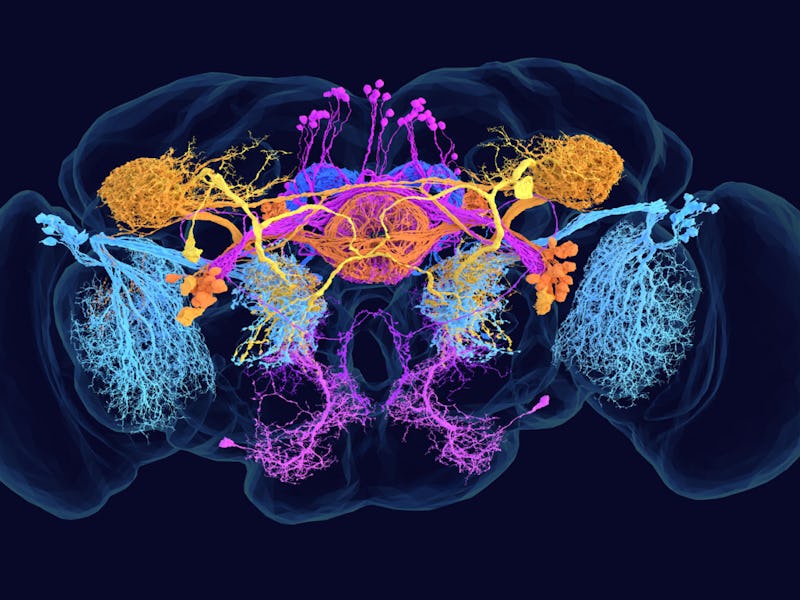This Complete Map of An Adult Fruit Fly May Finally Reveal Unsolved Mysteries About the Brain
This colossal achievement also gives us the first full simulations of neuron function.

In many ways, the brain is uncharted territory akin to the deepest parts of the ocean and farthest reaches of outer space. As with any new frontier, navigating it requires a map. Researchers have already created preliminary maps of the brains of nematodes and fruit fly larvae. But most recently, legions of researchers have constructed the most complex brain map yet: that of an adult fruit fly. This accomplishment yields an astonishing first when it comes to not only mapping the mind but developing a predictive simulation of one.
Two papers published today in the journal Nature lay out the details of a fully mapped adult female fruit fly brain, charting its 139,255 neurons and 54.5 million synapses, which are the connections between neurons. This landmark achievement results in the first whole brain wiring map, also known as a connectome, to predict the function of all the connections between neurons. Produced by the FlyWire Consortium, which comprises 76 laboratories and 287 researchers around the world, as well as citizen science volunteers from the public, this connectome is the first capable of predicting synaptic connections, which can help researchers simulate brain function in conjunction with behavior.
Neurons communicate with electrical signals. Every neuron can send electrical signals via synapses, the hundreds of pathways between neurons. Neurons send either excitatory signals, which encourages the receiving neuron to continue this signal chain, or inhibitory signals, which discourages the receiving neuron from further transmitting it.
This first-of-its-kind connectome can predict, based on the specific stimuli, whether neurons will send excitatory or inhibitory signals. Partial connectomes already yielded simulations of visual processing, but now this connectome extends simulations to other types of processing, like taste responses.
50 largest neurons of the fly brain connectome.
“To begin to simulate the brain digitally, we need to know not only the structure of the brain, but also how the neurons function to turn each other on and off,” co-author Gregory Jefferis, a research leader at the MRC Laboratory of Molecular Biology and the University of Cambridge, said in a press release.
This simulating connectome will be indispensable as biophysicists continue to understand how fly neurons function, and can refine this massive work. The researchers posit, for example, that inhibitory signals could serve as a means to redirect messages rather than halt them altogether.